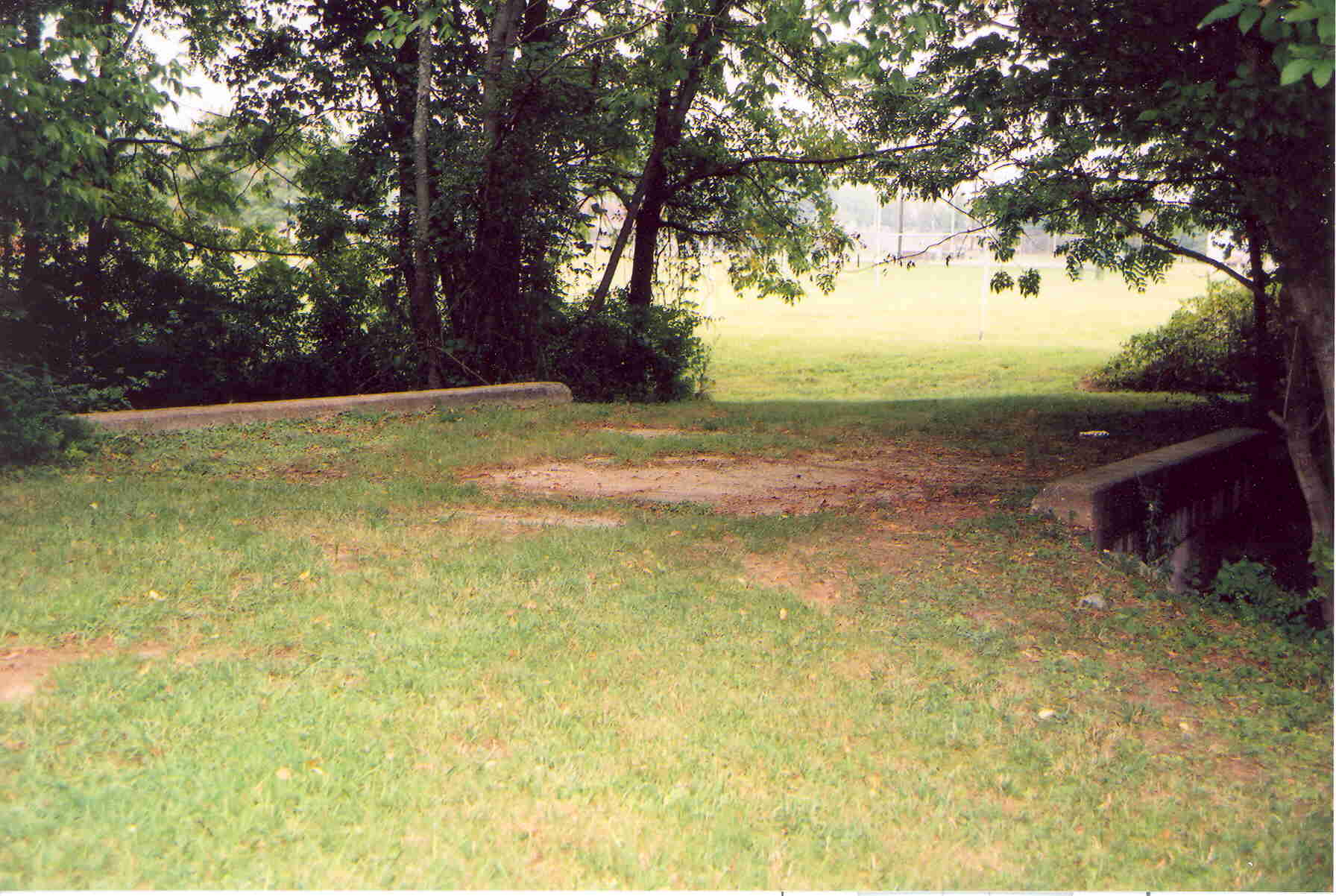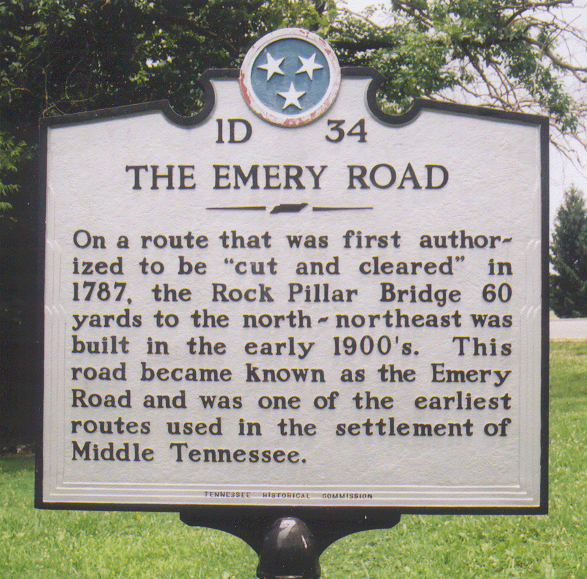The whole construct of postcolonialism is riddled with problems and questions. Children are colonists. Children colonize the adult past and make it their own, or they ignore the precolonial past. Adult society colonizes too. Places change from rural to suburban or urban. As they change landscapes undergo profound changes, and people get rearranged. There can be great transformations.
When I was a child I walked into my backyard and saw evidence of the past. There was a row of dogwood trees, and along the trees some strands of wire attached to wooden pools, the remnant of a fence. Next to to the fence was the barely discernible remains of an old dirt road, a country lane or farm road from the past. The lane could be made out by slight indentations in the earth, left by my wheels or tires. Where these indentations were visible they ran parallel to the trees and to the remnant of the fence. That was all. About a quarter mile up hill, on top of the ridge was an old peach grove, and there was also an area flattened by a bulldozer, the site of a World War II Army barracks, that was gone by the time I started exploring in the early 1950's. My childhood friends and I called the site the flat top, after a style of temporary house built in Oak Ridge during World War II. We spoke of the "old army barracks" having once been on the flat top, old being something that had been dismantled 5 years ago. The road and the fence were older than the barracks, which in turn dated from before the time of the Manhattan project.

The "pre-colonial" Emery Road Bridge in Oak Ridge is no longer in use.

Before I was born the land had been home to several rural communities. Scattered farmsteads, a few stores and churches, at least two schools. After 1948 a few remnants remained. The old gymnasium from Robertsville High School, that would become the gymnasium for Robertsville Junior High School. The old communities were named, Scarborough, Wheat, Robertsville, and Elza. Of the four Robertsville is best preserved in local memory. There is of course Robertsville Junior High School, but also Robertsville Road, and Robertsville Baptist Church. Scarborough is also known as a part of Oak Ridge. During my childhood Scarborough was the black part of town, completely segregated from the white community, close to the city dump, and just across a Ridge from the secret plant called Y-12. Although Y-12 was originally built as a Uranium enrichment facility, during the cold war, it became a center for building atomic weapons. Informally Y-12 was called the Bomb Factory. The memory of Elza was always connected to the memory of the Elza Gate, which is now the location of Elza Park. There is also an Elza Drive and an Elza Paint and Body Shop. It was an actual Elza Gate to the city of Oak Ridge until the city stopped being a restricted area in the early 1950's. The Gate was truly a magnificent structure.
In 1942, the United States Government decided to produce Atomic Bombs. In order to do so, they needed to build experimental reactors to research the production of Plutonium. They also need to build large factories that were devoted to the highly difficult and technical task of separating U235, the material needed to make bombs, from U238, the sister isotope that does not explode. In order to accomplish this the government needed to requisition a large amount of land in rural East Tennessee. There were several considerations that went into the choice of locations, but the most important was the availability of electrical power through the Tennessee Valley Authority.

Once the location was chosen, the next step was to get rid of the people who lived there. The four communities involved were homes to a thousand families. These communities were long established. The area had been settled as early as 1790. Robertsville was established in 1804. Wheat was over a century old, and had been the boyhood home of Sam Rayborn, a House Speaker who had represented a congressional district in Texas during the mid-20th century.

A rustic cabin - home to one of the thousand or so families who lived on the land that later became Oak Ridge.
At the time Oak Ridge was built, Tennessee was a profoundly rural state. Farm families constitute 63% of Tennessee's population. In Anderson county during 1942 a way of life suddenly changed.

This 60-plus-year-old photograph was taken at George Anderson’s
residence looking to the north, where his house stood on the south side of
present-day New Hope Pond Road, which was Bear Creek Road in 1942. Bear Creek Valley was the site of prophet John Hindrix 's vision. That vision was fulfilled when the Y-12 plant was built in Bear Creek Valley,

The federal government took over 59,000 acres of East Tennessee land, and evicted a thousand farm families. Massive industrial facilities were built. One of the new buildings, designated K-25, was a half mile long and a thousand feet wide. When completed it was the largest building under one roof in the world.

A new city was built, Oak Ridge. Actually there was a second city, Happy Valley, that was built on the site of what had once been Wheat Community. Happy Valley was torn down almost immediately after World War II, and its remaining population moved to Oak Ridge, or dispersed to surrounding communities. Today Happy Valley is a forgotten memory. The population of Oak Ridge, was 70,000 at its war time peak. Today it has stabilized at around 27,000. The location of Oak Ridge is one of stunning natural beauty. It could almost be called a city set in a park. The relationship between the new city of Oak Ridge and its past might be described as one of colony to colonized.
A colony can be defined as:
In its origins, Oak Ridge was a colony of the National Government of the United States. The Government simply took the land of the native people of East Tennessee away, declaring arbitrarily what could count as just compensation for a way of life. What was established was a community of people who were for the most part far from home. The new colonialists differed from the original inhabitants. They were far better educated. Many of the former residents did not have more than an 8th grade education. Many of the new residents of Oak Ridge had PhDs. There were differences in religion too. Oak Ridge included Catholic and Mormon families, and there was an active group of Jehovah's Witnesses. Such religious views were foreign to the old East Tennessee rural communities that proceeded Oak Ridge. Oak Ridgers voted Democratic. The old East Tennesseans were Republican. Oak Ridgers liked to drink alcohol. The traditional communities had been dry.
Henry Cabot Lodge once observed: "The word “colonial” is preferable to the more obvious word “provincial,” because the former is absolute, while the latter, by usage, has become in a great measure relative. We are very apt to call an opinion, a custom, or a neighbor “provincial,” because we do not like the person or thing in question; and in this way the true value of the word has of late been frittered away. “Colonialism,” moreover, has in this connection historical point and value, while “provincialism” is general and meaningless. Colonialism is also susceptible of accurate definition. A colony is an off-shoot from a parent stock, and its chief characteristic is dependence."
There is no doubt that the city of Oak Ridge has been dependant on the Federal Government throughout its existence. The relationship of Oak Ridgers to their neighbors in surrounding East Tennessee communities has always been one of Colonists to Provincials. The distance in the relationship is not only in terms of physical distance, it is also in terms of time. In time East Tennesseans and Oak Ridgers grew more like each other. In 2006 84% of Tennessee's population was urban, a remarkable shift in two generations. In many respects these changes left most Tennesseans with a post-colonial problem. An urban, modern present had colonized their past, and they were left with the problem of figuring out who they are.
By building Oak Ridge the federal government did not in fact intend to plant a colony, but it had.

| "G" Road is close to my childhood home. It leads out of Oak Ridge into the "pre-colonial" landscape beyond the city. I walked this road many times during my childhood seeking the hidden secrets of the past. |
We all have colonial legacies, and thus postcolonial status is part of the universal human experience.










No comments:
Post a Comment